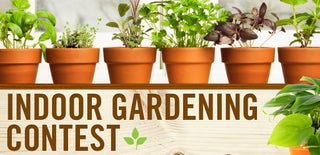Introduction: Mini Moss Garden From Backyard Materials
Here's an easy to make and care-for miniature garden that you can make to brighten up your home or workplace. You can put this together using materials that you can find in your household, backyard, and/or neighborhood.
Step 1: Materials
- A small container to hold the garden:
- I used a candy tin, similar to an Altoids tin, as my container. I thought that it was cute and compact at first, but I did overlook the fact that it might rust over time. I would suggest looking a glass or terracotta dish first choice, but if you do use a metal container, you may want to line the inside with plastic.
- Gravel, or other rocks for drainage material:
- Because your container probably won't have a drainage hole, you'll want to fill it with a bottom layer of some rocks to make sure that your plants won't be soaking in water. I collected some gravel from my backyard; pea gravel would also be good because of the small scale of this project.
- Potting soil:
- I would recommend using clean potting soil if you have any on hand versus digging up a bit of dirt from your backyard to make sure that it's pest free. If you do the latter, be sure to check for worms or any other wildlife before using the soil.
- Moss:
- You can usually find some moss in shady, moist areas as ground cover or growing on rocks and trees. When you find a nice lush patch, you can use a shovel to lift up a chunk of moss, including that the soil it is bound to. Try not to pull up too much more than you need if you're taking some from the wild or some place that isn't your backyard :) Also be careful when harvesting moss from a tree, as ripping bark off of the tree could damage it.
- Some tiny pebbles or figurines for decoration
Step 2: Putting Together the Garden
Arrange your drainage material at the bottom of your container. A lot of terrarium makers will also add a layer of activated charcoal to prevent odors and absorb chemicals from treated water and the soil from building up in the closed space. You can use charcoal here too, but because the garden isn't enclosed, I feel that it's not necessary.
Spread your soil layer over the rocks and pack it down so that the soil is not so loose. You'll want to shape your terrain, adding mountains and valleys to add more interesting shapes to your landscape.
Arrange the moss in your container, breaking it apart into smaller pieces if necessary. You can use some clippers to trim off excess moss that doesn't fit into your container.
After transplanting your moss, water it lightly so that it remains moist and establishes itself nicely in your container.
Step 3: Adding Decorations
I wanted to use the small pebbles to make a decorative rock river. You can also make tiny signs, place twigs, sea glass, or put in some small figurines.
Here's some great ideas from terrariums for inspiration:
A mini sheep pasture: https://www.etsy.com/listing/110057063/terrarium-...
Secret garden: https://www.etsy.com/listing/46340296/the-secret-g...
Charming figurines in beautiful scenes: http://www.renegadecraft.com/crafter-spotlight-twi...
Step 4: Caring for Your Garden
Be sure to place your garden in an area with filtered light and avoid direct sunlight. Moss tends to grow in moist, shady spots, so you don't want to burn your mosses with too much light.
Because this is not an enclosed terrarium, you will want to water your mosses more often, as there won't be the lingering condensation that keeps plants in a terrarium happy. You can water your mosses about twice a week, but avoid letting them become soggy. If they're getting dry to the touch this is a good sign they need more water.
If things don't go as planned, and your mosses are dying, you can always try again with a new specimen. Just give the original sheet of moss that you harvested from some time to grow back, and in time, you can harvest another piece.

Third Prize in the
Indoor Gardening Contest













